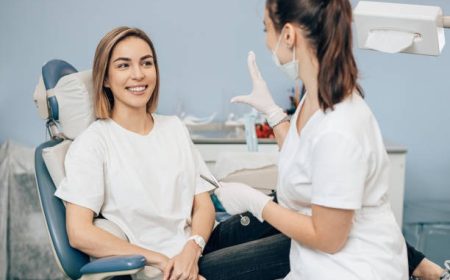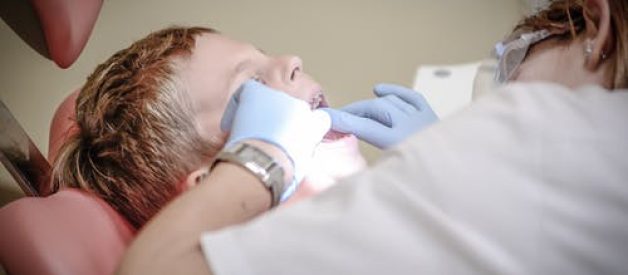The decision to straighten your teeth or correct bite disorders using Invisalign, a clear plastic aligner, is one that requires consideration of several factors, including past dental procedures. The dental landscape has seen a tremendous shift with the advent of orthodontic technology advancements.
Today, more people are opting for teeth straightening methods that are discreet, effective, and blend seamlessly with their lifestyle. Invisalign, this innovative dental technology, leads the pack. But does the success of your Invisalign treatment hinge on your previous dental work? Let’s delve in to find out more.
Understanding Invisalign
Invisalign is a modern and clear plastic aligner whose popularity in the orthodontic treatment field is unprecedented. This not-so-secret weapon in dental alignment is coveted for its ability to straighten teeth with remarkable subtlety, hence the tag invisible orthodontic solution.
Invisalign applies gentle pressure on your teeth, gradually moving them until they reach the desired position. It is the preferred alternative for those with overcrowded teeth or looking to correct bite issues while maintaining an aesthetic appeal. The aligners are easy to adjust and uniquely designed to match your tooth shape and position, maximizing comfort.
The Impact of Previous Dental Work on Your Invisalign Treatment
Your orthodontist will assess your dental history extensively. They will account for any previous dental work, including tooth extractions, fillings, crowns, or dental bridges, as these could impact your Invisalign treatment.
1. Dental Fillings and Crowns
For patients with dental fillings or crowns, the application of Invisalign might necessitate certain additional attachments. These requirements generally do not interfere with the orthodontic experience provided by Invisalign. But, due to the fragile nature of dental crowns, a more careful and cautious approach may be needed during the attachment or removal of the aligners.
- Patients with dental fillings or crowns may need extra attachments when they choose Invisalign for their orthodontic treatment.
- Despite the need for additional setup, these cases usually do not detriment the overall experience or effectiveness of using Invisalign.
- Nonetheless, dental crowns are somewhat delicate. Hence, attaching or removing aligners must be done with extra caution to prevent any potential damage.
2. Dental Bridges
Having dental bridges can pose a challenge when considering Invisalign. This is because bridges link two or more teeth together, hindering the individual movement that is vital for the effectiveness of Invisalign. In such scenarios, exploring other treatment options might be necessary.
- Dental bridges connect multiple teeth together, which might limit the separate movement needed for successful Invisalign treatment.
- This limitation could potentially make Invisalign less effective for those with dental bridges.
- Considering alternatives may be beneficial where dental bridges limit the function of Invisalign.
3. Tooth Extraction
Spaces left after tooth extraction can be filled using Invisalign, but this primarily depends on your orthodontist’s thorough assessment and expert advice. At My Orthodontist Langley, professionals are dedicated to providing personalized orthodontic solutions.
4. Dental Implants
are fixed firmly in place and cannot be moved. Consequently, individuals with dental implants may need to consider alternate treatment methods or possibly partial treatment using Invisalign.
- Dental implants are permanently fixed in the mouth and cannot be moved, which can interfere with Invisalign treatment.
- Because of their immobility, patients with implants may need to explore other orthodontic solutions.
- Partial Invisalign treatment could be an option if only certain teeth need adjustment.
Finding the Right Orthodontist
Some orthodontic issues, such as overbite treatment, crossbite solution, underbite correction, and open bite therapy, may be too advanced for Invisalign. Severe gaps, tooth rotation issues, and teeth tilting may also call for traditional methods like braces. There’s a misconception that overjet correction techniques using braces are outdated. But, the truth is, orthodontists still rely on braces for advanced orthodontic issues.
An Orthodontist Experience in Invisalign is Vital
Given the technical considerations involved in the process, the success of your treatment greatly relies on the skills and expertise of your orthodontist. It would be wise to choose an orthodontist in Surrey for personalized care, especially concerning the use of Invisalign aligners.
Invisalign vs. Braces
When it comes to orthodontic solutions, Invisalign and braces stand out with individual strengths. Invisalign provides an almost ‘invisible’, removable option for teeth correction, allowing for more flexibility. However, certain teeth conditions might limit its effectiveness. Conversely, braces, while non-removable, can efficiently treat complex orthodontic problems.
- Invisalign offers an aesthetically pleasing, unnoticeable dental treatment. Its removable nature makes it a more flexible option for teeth correction.
- However, Invisalign might not be the best choice for all teeth conditions, especially severe or complex ones.
- On the flip side, braces are a non-removable option and can be incredibly effective in treating advanced orthodontic issues. They are often chosen for their strong corrective capabilities.
Conclusion
In conclusion, previous dental work can impact your Invisalign treatment. It is essential to discuss your full dental history with your orthodontist to obtain a thorough evaluation and personalized dental advice that best suits your dental needs. With technological advancements like Invisalign, beautiful smiles have become increasingly achievable for everyone.








